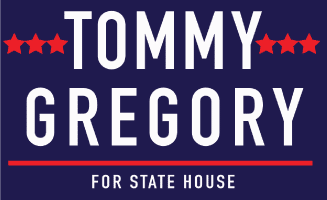Before COVID-19, before nationwide protests, and before rioting shook our streets, one of the biggest issues during the Democratic presidential primary debates was that of the absurdly high cost of college and associated student debt.
It’s a legitimate issue. College is exceedingly expensive. But the Democratic candidates never got into why college costs have been skyrocketing faster than even health care or what to do about the underlying problem. Instead, they offered government bailouts in the form of debt forgiveness and socialism is the form free college for everyone. These “solutions” would actually make the problem immensely, unsustainably worse.
For instance, Democrat standard-bearer Joe Biden wants to expand federal income-based college debt forgiveness and create a free public college program for families making less than $125,000.
But higher education was never to be intended as an entitlement. The underlying problem that the Democrat candidates did not identify was the market-destroying interference by the federal government in guaranteeing loans in such a massive way that college administrators had zero incentive to contain costs. They had a blank check and they used it.
The numbers tell the story. In the past 20 years, tuition is up 77 percent more than the general rate of inflation, and even 37 percent more than the surging costs of health care. It’s truly out of control. The Higher Education Act of 1972 stipulated that student loans through banks and the Department of Education would be government guaranteed — no risk to the banks. So naturally, enormous numbers of teens “qualified” for the loans.
At first, it created an opportunity for many that had not existed. But as enrollment and college costs soared, the federal government just kept pumping out ever more guaranteed loans.
Worse, the virtually endless flow of money meant universities could heedlessly birth giant bureaucracies and charge into largely market-less fields, social justice programs and other “soft” degrees. Students with these majors discovered they had the same ridiculously high debts as engineers, economists, mathematicians, scientists and so on, but they had degrees that were far less valuable.
More numbers round this out. Nearly two-thirds of all high school graduates enroll in college — a statistic which, in itself, makes no sense for the job market. But 40 percent of those drop out of college before completing a degree and frequently are stuck with entry-level jobs and still crushing debt. Of those that do graduate, about 25 percent earn the same as an average high school graduate, but with all the debt. So more than half of high school students who grab the federally guaranteed loans for college are actually making a bad financial decision.
But no matter to the universities. They have the guaranteed river of taxpayer money and they just kept growing the pricey edifice of the modern university. The losers in this are the students and the taxpayers.
There was essentially no accountability because the federal government’s interference had destroyed market discipline. If Democrats understood the reason for the high costs, they could hardly admit it was the federal government’s fault, and at the same time say the federal government would fix it by doubling down.
The rest of the impact of ruining the market mechanism meant that many students who were not qualified nonetheless went off to college, and now we have shortages of skilled talent in basic well-paying careers such as electricians, plumbers, welders and so on. Many of these professions make more than the college students who have expensive degrees for which there is no market and they enter these sectors with no college debt. The professional trades should be encouraged for many high school students.
The solution here is obvious. We need to return the market forces to both pricing higher education and determining degree offerings. Peter Morici, an economist and professor at the Smith School of Business at the University of Maryland, suggested a few ways this could happen in a MarketWatch article.
“To enroll students with federally guaranteed loans, universities should be required to freeze tuition until the inflation-adjusted cost of college is in line with health-care inflation over the last two decades. And universities should be required to borrow against their endowments, buildings and land to provide half the funds for student loans — and take losses if those are not repaid.”
Forcing market results would result in professors spending more time in classrooms and less in their own ventures; the soft majors with minimal opportunities would be reduced; and the bloated bureaucracies, including an army of speech-enforcing political correctness police, would be scaled back.
Florida State Rep. Tommy Gregory, R-Sarasota, represents House District 73 covering parts of Sarasota County and Manatee County.


